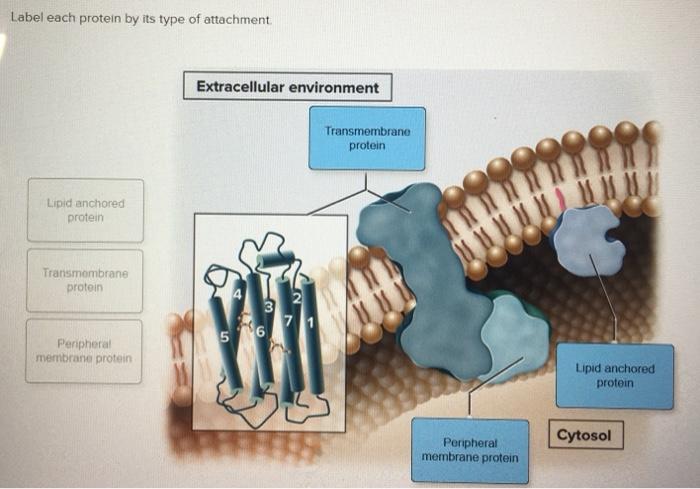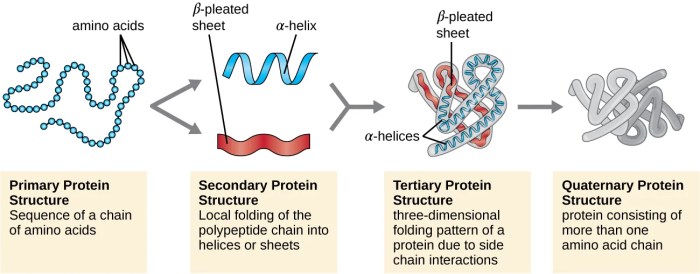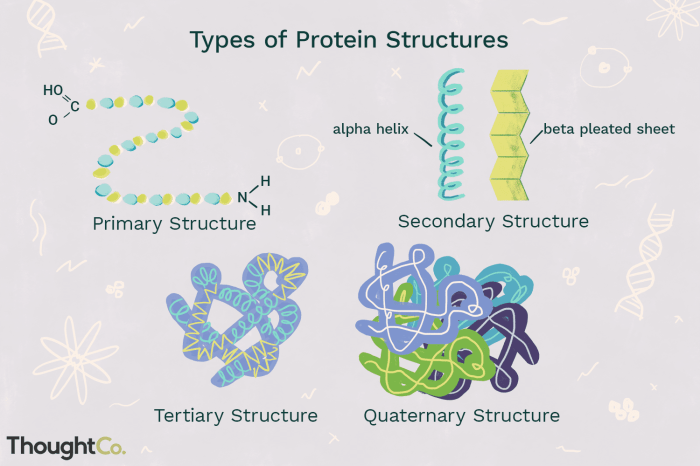Label each protein by its type of attachment. – Labeling proteins by their type of attachment is a crucial technique in various scientific disciplines, providing insights into protein structure, function, and interactions. This guide delves into the mechanisms and applications of protein labeling, empowering researchers with a comprehensive understanding of this essential tool.
This comprehensive guide provides a thorough examination of protein attachments, labeling methods, applications, and challenges. It offers practical guidance on performing labeling procedures and explores innovative approaches to overcome limitations.
Types of Protein Attachments: Label Each Protein By Its Type Of Attachment.

Protein attachments are covalent modifications that alter the structure and function of proteins. These attachments can be classified into various types based on their chemical nature and the amino acid residue they modify. The primary types of protein attachments include:
Glycosylation
- Attachment of carbohydrate molecules to proteins, forming glycoproteins.
- Involves the addition of monosaccharides, oligosaccharides, or polysaccharides.
- Can affect protein stability, solubility, and interactions with other molecules.
Phosphorylation
- Attachment of phosphate groups to serine, threonine, or tyrosine residues.
- Regulates protein activity, localization, and interactions.
- Involved in cellular signaling pathways and metabolic processes.
Ubiquitination
- Attachment of ubiquitin molecules to lysine residues.
- Targets proteins for degradation by the proteasome.
- Plays a crucial role in protein quality control and cellular homeostasis.
Acetylation
- Attachment of acetyl groups to lysine residues.
- Regulates protein activity, stability, and interactions.
- Involved in gene expression, metabolism, and cell cycle progression.
Methylation, Label each protein by its type of attachment.
- Attachment of methyl groups to arginine, lysine, or histidine residues.
- Regulates protein activity, localization, and interactions.
- Involved in chromatin remodeling, gene expression, and signal transduction.
Sumoylation
- Attachment of small ubiquitin-like modifier (SUMO) proteins to lysine residues.
- Regulates protein stability, localization, and interactions.
- Involved in nuclear transport, transcription, and DNA repair.
Lipidation
- Attachment of lipid molecules to proteins, forming lipoproteins.
- Enhances protein solubility, membrane association, and signaling.
- Involved in membrane trafficking, cell signaling, and lipid metabolism.
FAQ Corner
What are the different types of protein attachments?
Protein attachments include glycosylation, phosphorylation, ubiquitination, and acetylation, among others.
How can proteins be labeled by their type of attachment?
Techniques for labeling proteins by their type of attachment include immunoblotting, affinity chromatography, and mass spectrometry.
What are the applications of protein labeling?
Protein labeling finds applications in protein identification, characterization, and studying protein-protein interactions.

